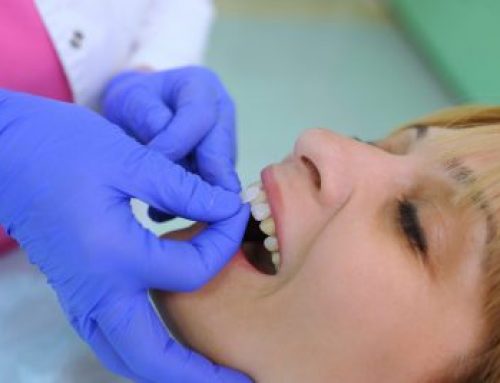The Rise of Cosmetic Dentistry
Cosmetic dentistry has steadily gained prominence over recent years, becoming an essential element of modern dental care. Its rise isn’t simply attributable to societal beauty standards; it demonstrates our growing understanding of how oral aesthetics relate to individual confidence and overall wellness.
First impressions matter in our interconnected world; smiles are often critical elements in creating them. From welcoming someone at social gatherings to confident introductions at professional meetings, the significance of a radiant smile cannot be overstated.
Modern dental technology has given patients access to treatments tailored to their unique desires and needs, including veneers that can produce dramatic transformations with minimal invasiveness.
But cosmetic dentistry’s vast array of procedures and treatments may seem overwhelming, leaving patients uncertain about which path is best for them to reach their dental objectives.
This article seeks to shed some light on this complex field, with particular attention paid to dental veneers while drawing comparisons to other popular cosmetic procedures. Our goal is to bring clarity so everyone can confidently navigate their cosmetic dentistry journey.
Understanding Dental Veneers
Dental veneers have become an indispensable element of cosmetic dentistry. Crafted to match the color, shape, and size of each patient’s teeth perfectly, veneers offer functional and aesthetic benefits for patients seeking cosmetic enhancements.
Made typically of porcelain or composite resin, veneers are an attractive solution to discolored teeth that whitening alone may not entirely correct. Their strong structure resists staining while mimicking their light-reflecting properties to provide the utmost in light reflection – this makes them the go-to option for many seeking to address discolorations that goes beyond what whitening can address.
Preparing the tooth requires extracting an approximate enamel thickness equal to the veneers to ensure an ideal and natural look. Once an impression is taken, masks will be created in a laboratory before they’re installed with unique adhesive at their next visit.
But it’s essential to remember that getting veneers requires an investment since the procedure involves the removal of enamel. But with proper care and maintenance, veneers can last many years while giving patients beautiful and resilient smiles.
Dental veneers offer an effective solution to those seeking to transform their smile. Surfaces provide a versatile remedy for discoloration, gaps, and chips to minor misalignments or issues. Consultation with a dental professional should help determine whether veneers are right for you and your dental journey.
Teeth Whitening: A Brighter Smile
Teeth whitening has long been one of the most sought-after procedures in cosmetic dentistry, promising to give people brighter smiles more quickly than other procedures can. Teeth whitening addresses discolorations caused by stains or discolorations while returning their shade to a natural, appealing state.
Many factors contribute to the gradual discoloration of teeth over time, including coffee, red wine, tobacco products, certain medications, and natural effects like aging. Teeth whitening effectively counteract these negative impacts by restoring luminosity into teeth, often improving self-confidence.
The process involves using bleaching agents such as hydrogen peroxide or carbamide peroxide to dissolve the stain-causing elements to brighten teeth more evenly and make their color less concentrated, lighting them from within and leaving your smile more appealing overall. At the same time, over-the-counter kits may offer results more quickly and significantly than professional treatments offered at dental offices.
However, people must approach teeth whitening with realistic expectations. Not all discolorations may be fully correctable with bleaching; yellowish teeth tend to bleach better, while brown or grayish ones might not respond as effectively. Furthermore, crowns, fillings, or veneers won’t whiten alongside natural teeth, which could diminish aesthetic results overall.
Overall, teeth whitening offers a straightforward, cost-effective method to improve one’s smile. While this approach may work for some individuals, seeking professional advice before initiating this treatment is always advisable to achieve maximum effectiveness and make the most out of it. Consulting a dental professional will ensure the desired outcomes – which means you are one step closer to flaunting an alluring and more radiant grin!
Dental Crowns and Bridges: Beyond the Surface
Dental crowns and bridges are essential in restorative and cosmetic dentistry, uniting functionality with aesthetics. Their primary function is to address damaged or missing teeth while improving one’s smile’s overall aesthetics.
Dental crowns, or caps, are custom-crafted pieces designed to cover and strengthen damaged teeth, from cracked or worn down ones to those containing large fillings or any damage. Custom-tailored to match natural teeth’ shape, size, and color for seamless integration and aesthetic beauty – crowns simultaneously provide strength and beauty!
Bridges serve to fill any gaps created by one or more missing teeth, featuring two crowns on either side to act as anchor teeth (called “abutment teeth”) with a false tooth or teeth known as “politics” between. Natural teeth, implants, or both for maximum effectiveness can support bridges.
Crowns and bridges may be constructed of various materials, such as porcelain, ceramic, gold, alloy, or combinations. The choice typically depends upon location, aesthetic considerations, and personal preference; porcelain and ceramic are more popular due to their natural look.
Crowns and bridges offer two significant benefits. Not only can they alleviate dental issues, but they can also serve as cosmetic upgrades that improve the appearance of the mouth. If properly cared for, crowns and bridges often last a significant period before needing replacing again.
Dental crowns and bridges go far beyond simply correcting dental issues; they offer an ideal combination of utility and aesthetics that allows people to address the source of their dental challenges while keeping the allure of their smile intact. A consultation with your dentist will illuminate their potential benefits as transformative tools.
Dental Implants: Replacing the Missing
Dental implants represent one of the latest innovations in modern dentistry, offering a solution that closely replicates both function and appearance of natural teeth. Far beyond cosmetic fixes, implants provide lasting solutions to tooth loss that offer durability and aesthetic appeal.
At its core, a dental implant is a titanium post surgically placed into the jawbone below the gum line to anchor replacement teeth or dental bridges. Unlike dentures that can be removed anytime, implants provide permanent solutions with a similar feel and functionality to natural teeth.
Dental implants offer one significant advantage in the form of their ability to prevent bone loss. When teeth are lost, their absence leads to jawbone atrophy over time – but implants fill this void and ensure it remains stimulated and healthy.
Dental implants offer undeniable aesthetic advantages beyond functionality. Engineered to integrate with bone, they ensure they don’t shift or slip as dentures might, creating an all-natural appearance and feel while giving individuals confidence when smiling, talking, or eating.
Dental implants give many people a permanent solution to missing teeth by restoring function and appearance. With proper oral hygiene practices and regular visits to their dentist, implants offer near-permanence to this dilemma.
Dental implants offer more than replacements for missing teeth; they provide comprehensive solutions that address tooth loss at both functional and aesthetic levels. Individuals seeking long-lasting, natural-looking solutions may find dental implants the answer – helping them maintain an active life while smiling with pride.
Composite Bonding: The Art of Repair
Composite bonding demonstrates the subtlety of cosmetic dentistry, seamlessly transitioning from imperfections to an ideal smile. A minimally invasive process that employs science and artistry to address dental flaws precisely.
Composite bonding, made of resin-based material, can be tinted to match the natural hue of an individual’s teeth and is primarily used to repair decayed, chipped, fractured, or discolored teeth. The procedure typically entails roughening the tooth surface before applying a conditioning liquid and adhering and molding the composite material to achieve the desired shape.
Composite bonding goes beyond aesthetics to restore the functionality of teeth. A chipped tooth, for instance, could cause discomfort or interfere with regular chewing; with bonding, its appearance and function are improved – guaranteeing comfort and efficiency in daily activities.
One of the hallmarks of composite bonding is its preservation of natural tooth structure. In contrast with crowns or veneers that often alter original teeth structures, bonding preserves more of what was once there for preservation purposes.
Composite bonding stands out in immediate results, often completed within one visit and producing rapid transformation. Thanks to its non-invasive nature and fast turnaround time, composite bonding is usually chosen by those seeking cosmetic improvements without extensive surgery.
Overall, composite bonding is an art and technique of cosmetic dentistry, not simply about masking imperfections but about truly repairing and improving one’s natural smile. If you want an immediate solution to minor dental flaws that value preservation and preservation, then composite bonding could be the right option for you.
Orthodontic Treatments: Straightening Things Out
Orthodontic treatments have long been associated with straighter smiles; however, their benefits extend beyond aesthetics into oral health and functionality. No longer limited to adolescents alone, adults are also increasingly turning to orthodontics to enhance their smile and overall dental well-being.
Braces, one of the best-known orthodontic devices, has substantially transformed. Traditional metal braces and nearly invisible clear aligners are now available to suit various patient needs and cosmetic preferences. Each type has been explicitly created with specific purposes in mind and designed with individual patients in mind to fulfill particular goals or meet cosmetic preferences. Witnessing how these devices slowly realign teeth back into their optimal positions through minor adjustments over time is remarkable.
Straightening of teeth is just the start; orthodontic treatments also address malocclusions or improper bites that lead to other issues, from difficulty chewing and speaking to jaw pain and increased wear on enamel. Orthodontics plays an integral part in preventing these complications by aligning jaws appropriately, so this form of dentistry plays an invaluable role.
Another often-overlooked advantage of orthodontic treatments is their contribution to better oral hygiene. Crowded or overlapping teeth are difficult to clean effectively, leading to plaque buildup and potential dental issues. A straighter set of teeth makes for easier cleaning, improving oral health overall.
Psychological benefits derived from orthodontic treatments cannot be overstated. Achieving a straighter smile often equates to increased confidence and self-esteem – for some, this transformation goes well beyond cosmetic considerations; rather, it impacts social interactions and perception.
At its core, orthodontic treatments offer more than aesthetic enhancements: they represent a commitment to optimal oral health, functionality, and achieving self-assurance through having a beautiful straight smile. If considering aligning their teeth, their journey promises tangible and intangible rewards.
Making the Right Choice for Your Smile
Navigating the vast expanse of cosmetic dentistry can be daunting, given all available treatments and procedures. From veneers to orthodontics, each one promises transformation – the essential lies in finding one that best meets individual needs and aspirations.
First and foremost, it’s crucial to identify and isolate which aspects of one’s smile need enhancing. Is the primary concern discoloration or alignment? Acknowledging these specifics will serve as a compass during decision-making, not simply following trends but seeking what resonates with their unique dental story.
Financial considerations also play a part in choosing cosmetic dentistry treatments, with budget constraints often influencing decisions. But it’s essential to view cosmetic dentistry as an investment in yourself; more expensive procedures might produce longer-lasting and more satisfying results than cheaper procedures.
Duration and maintenance should also be carefully considered when making decisions regarding treatments. While specific procedures might provide quick fixes with immediate results, others, like orthodontic interventions, require a longer commitment. In addition, particular systems require more stringent post-treatment caretaking. All this into account can help make an informed decision.
Professional guidance can be precious. An experienced dentist can offer invaluable insights from their experience and expertise, providing a fuller picture of all treatment options relative to an individual’s dental health, needs, and aesthetic goals.
Finding the appropriate choice for one’s smile requires an intricate balance between reflection, practical considerations, and expert guidance. Cosmetic dentistry provides many avenues for exploration that promise a form of transformation. Yet, the journey that best satisfies embraces individuality while remaining mindful about informed decision-making, leading to a smile that truly expresses who the individual truly is.
Want to enhance your smile with dental veneers, or learn about our other services? Reach out to HPS Advanced Dental now, and together let’s create the brightest smile possible!




